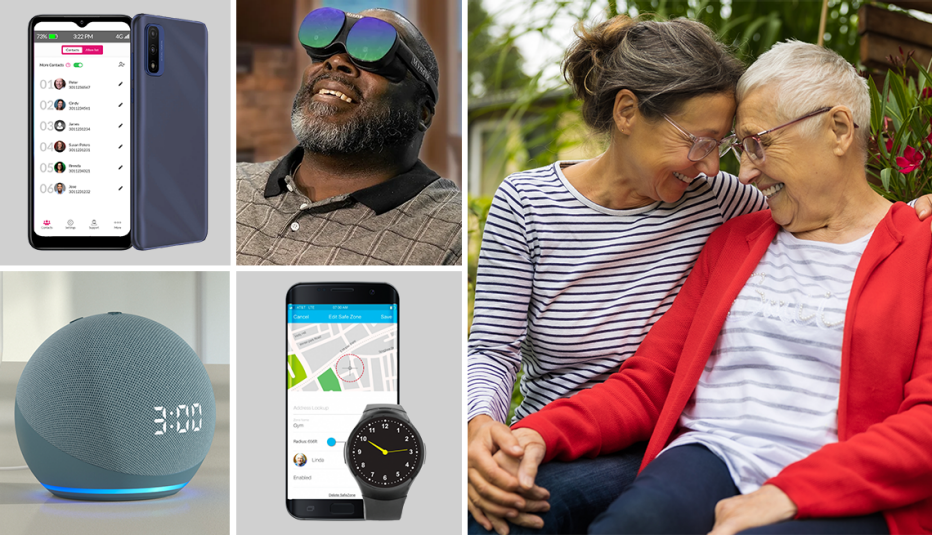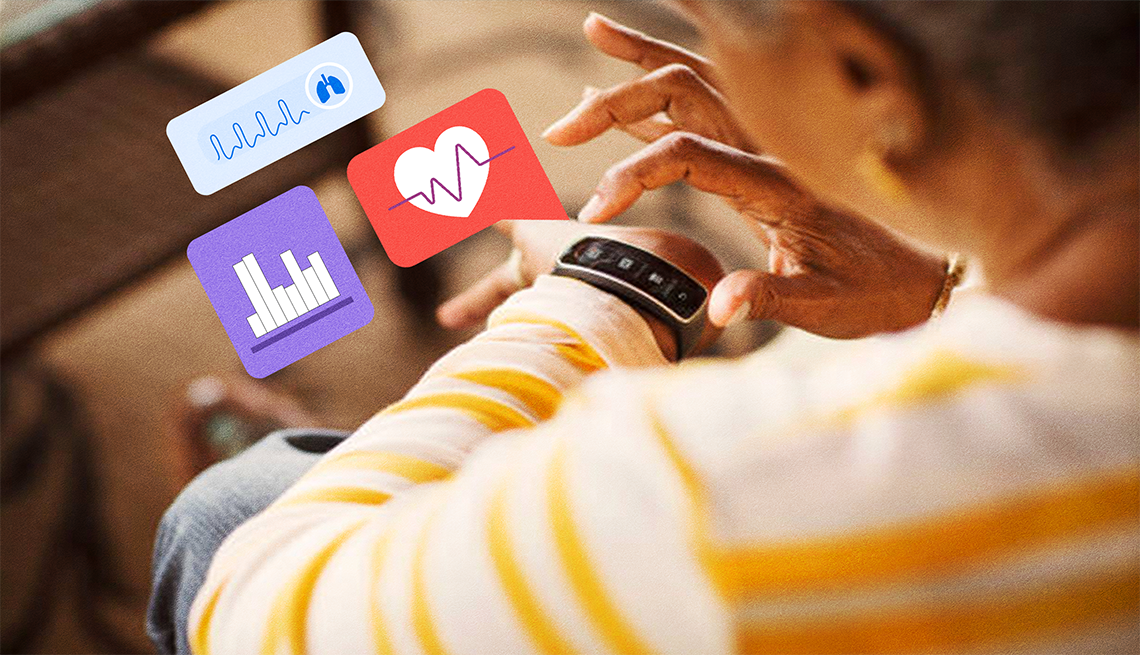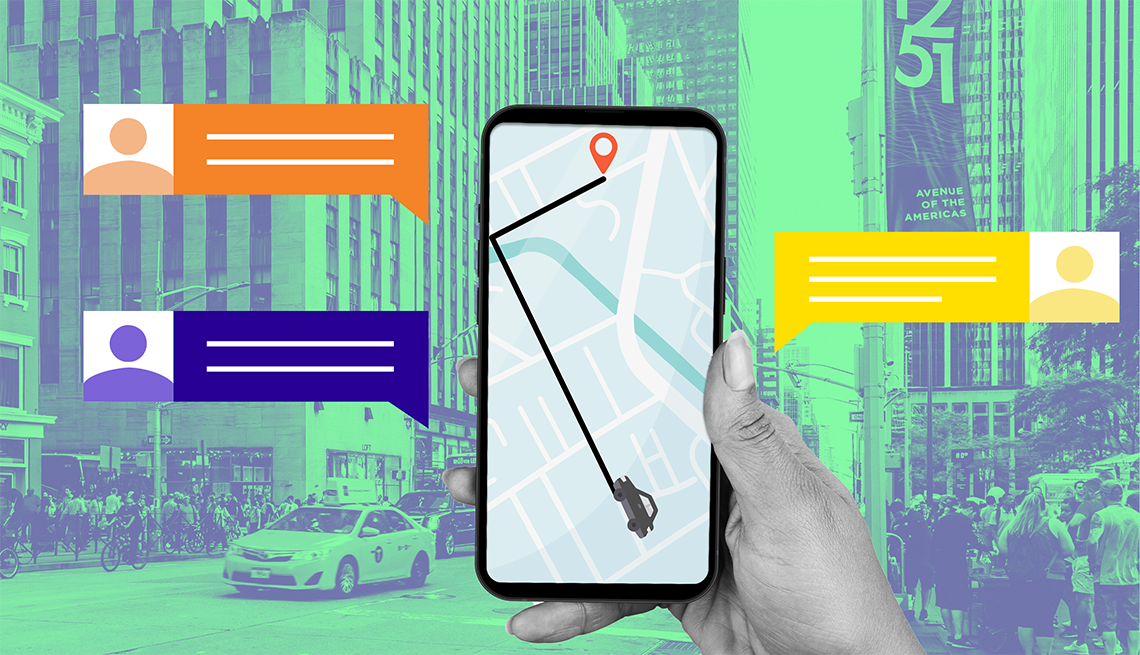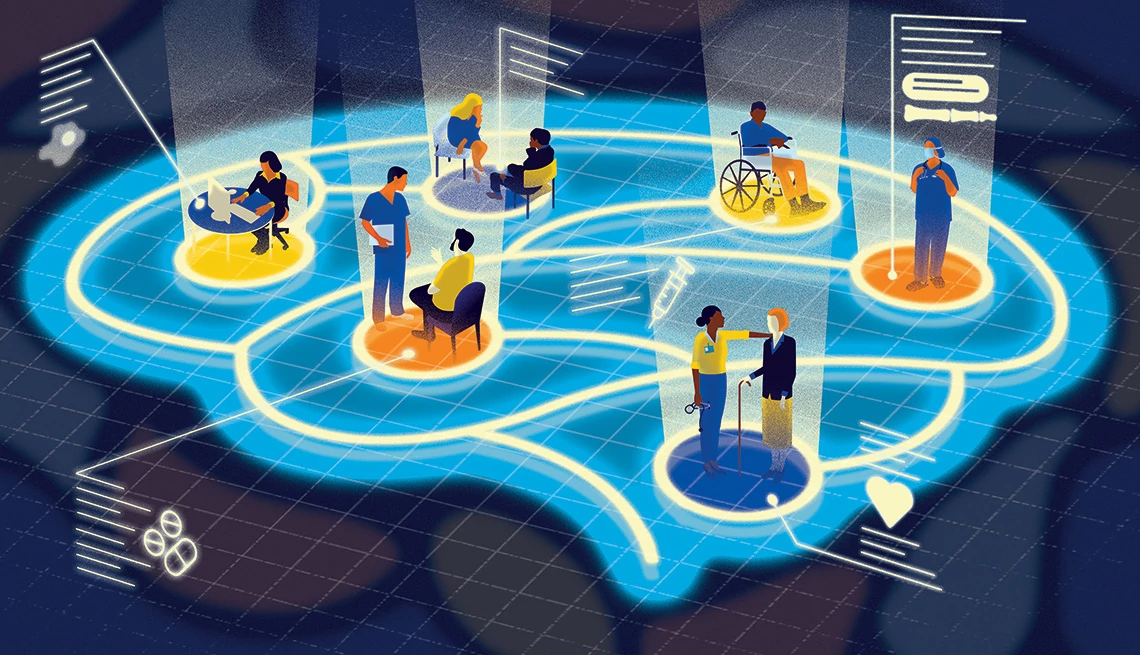AARP Hearing Center


Everyday technology that people use around the house — including doorbell cameras, smart speakers and wrist-worn trackers — can help those suffering from cognitive decline.
The tech may ease the burden on caregivers, too.
“Every family caregiver’s number one priority is their loved one’s safety,” says Jennifer Reeder, director of educational and social services for the Alzheimer’s Foundation of America. “And this is where technology can play an important and helpful role, especially if the caregiver and their family member who is living with dementia don’t reside in the same home.”
No solution works for all Alzheimer’s patients and their caregivers.
“Dementia-related illnesses affect everyone differently,” Reeder says.
Different stages mean varying abilities
Early on, those who still possess most of their mental faculties may have an “I-don’t-need-that-thing” attitude, along the lines of an older adult who initially resists wearing a pendant that can summon help in case of a fall or a hearing aid to understand conversation better. As Alzheimer’s or other forms of dementia progress, more responsibility shifts to family members and caregivers who must make difficult choices.
Caregivers and patients have different comfort levels with technology. Some know Windows, some Macs, and some have no knowledge of computers — or smartphones. Some live in homes with robust Wi-Fi connections while others are without decent internet speeds. Cost can be a problem. Several solutions aren’t cheap. The good news: Often the most basic products provide the best fixes.
“Simple and clear messages and options are always better,” Reeder says. She mentions a basic universal remote control that a caregiver might set up for a few favorite TV channels. It “gives the person a choice and a level of independence, but not overwhelming or confusing them.”
Among the most popular of the 600 to 800 products sold in The Alzheimer’s Store are radios and music players pared down to a few controls, according to Scott Kochlefl, director of operations for the online store. For example, on the $134.95 One Button Radio, a caregiver can remove the front panel to set the volume and a preferred AM or FM station. Other available products include animated robotic therapy dogs and cats, lockable talking medicine dispensers and talking alarm clocks.
Here are some areas of tech caregivers can look to for help.
1. Try some smartphone apps
Hundreds if not thousands of apps are available in the health area, including some that specifically apply to people dealing with dementia. Searching for “dementia” in the Google Play Store or Apple’s App Store yields apps for brain health games, calendars and clocks, caregiving tips, cognitive impairment tests and directories of services.
The problem is information overload and an inability to tell when apps have been clinically vetted or even need to be.
“Are you going to download 12 of these apps and then see how they work for you?” says Jeffrey Kaye, professor of neurology and biomedical engineering and the director of the Layton Aging and Alzheimer’s Disease Center at Oregon Health & Science University. “There’s no easy way to actually figure out what is hopefully going to be helpful for you in this kind of larger available universe.”










































































More From AARP
How to Manage 8 Dementia-Related Behaviors
Finding the right solution requires steady sleuthing, calm compassion
AARP Smart Guide to Keeping Your Memory Sharp
22 science-backed ways to growing a healthier, happier brain, now and in the future
The Unique Challenges of Dementia Caregiving
Tips on how to manage such often-difficult care